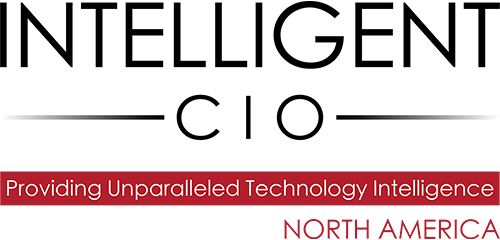Business leaders will be familiar with the ‘Great Resignation’ – the term assigned to the global trend of employees leaving their jobs in their swathes, with burnout being a key contributor. Employers must take steps to better understand and manage the well-being of their teams to avoid this. Here, Alejandro Martinez Agenjo, CEO and Co-founder, Erudit, offers his take on how employers can reduce burnout, increase engagement and improve employee retention.

What if there was a better way to measure the most important factors when it comes to employee retention? With people quitting jobs at record rates, companies need better tools to measure engagement and the risks of burnout and turnover.
Alejandro Martínez, CEO art Erudit, discusses an AI-powered workforce intelligence company that drives better decisions for businesses with next-generation AI tools. In a post COVID world, engaging and retaining employees are more important than ever given the major changes that have impacted the workforce and job market over the past two years.
What are the financial implications of workplace stress?
The implications are huge and have increased significantly due to COVID-19 and remote work. For example, voluntary turnover related to burnout has a cost of US$15,000 per employee, per company. That means we are talking about an average of US$50,000 per employee, per voluntary turnover related to stress. There are also hidden costs related to productivity, engagement, motivation and collaboration with colleagues.
What is the impact of the Great Resignation and why are so many employees leaving their jobs?
Around four million Americans quit their jobs in the last month – we are talking about people with a gross salary of more than US$70,000 or US$80,000 per year. That’s something we have never seen before.
I think there are two main reasons. The first is that, because work is allocated, individuals can work from anywhere and therefore have more options about where they can, and want, to work. Secondly, it is related to the stress around the pandemic. A lot of people have quit jobs and are trying to fix personal problems rather than being purely involved with work.
How can Erudit.ai identify when an employees’ well-being is at risk?
AI doesn’t work by itself; you need a good team of data scientists who are able to make the AI understand previous jobs. Your AI is replying with the words of a human expert.
We train thousands of databases, created with text and voice, to understand from the perspective of a PhD in psychology the level of burnout or level of engagement in their very specific piece of text or voice.
After that, you have to train Artificial Intelligence to reply with the judgement of an expert, so it’s as if a leading psychologist was providing feedback in real-time.
Can you explain how your AI-powered software can take insights from a company’s communications suite?
We have created state-of-the-art models to provide, for example, human capital leading indicators such as voluntary turnover raise, burnout raise or engagement levels and we are connecting our AI architecture using the API of the intercommunication tools.
We connect our AI architecture to whatever communications the company uses and that’s how we provide insights.
Our AI is digesting the language and we are transforming that into human capital leading indicators about how many people risk voluntary turnover from your company, how many people are experiencing burnout or how engaged they are and what are the reasons behind these leading indicators that we are providing.
Can you explain what information the suite’s dashboard supplies to users?
Right now, we are very focused on providing information to C-level executives, venture capitalists and private equity firms. We want to help them better understand their human capital and realize that if they understand their people, they are going to gain deeper knowledge about their business.
We are focused on burnout raise. What’s the probability that a group of people in your company are going to suffer a burnout episode by next week?
Also, voluntary turnover, because resignation is a huge problem in the United States and we are providing one of the first objective real-time indicators about who in the company is very close to quitting and what the reasons are behind this.
We are also providing indicators related to engagement. How motivated are your people? How engaged are they?
In addition, we are providing the next level of AI topics, called Subwave. The AI is able to understand trending topics from your intercommunication tools. Through the AI, we are able to understand the impact of this on voluntary turnover rates, burnout rates and engagement levels.
How would your suite indicate if an employee had a high risk of burnout?
With burnout, we start by taking the practical definition, we have the psychology team, so we get a practical definition from this metric. We say ‘okay, now we are going to tag this specific database from zero to five.’ We tag the database that will be used to train the AI and tag them from zero to five, depending on the level of the burnout.
Then the AI is able to provide to you the same level of burnout that a person with a PhD in psychology would be able to find. It depends on how people talk or how people text, we are not looking for various specific words, we are looking for the meaning of the whole message. It’s about the whole meaning of the phrase or the conversation that you are having because we are not looking for specific points, we look at the whole meaning.
How do you ensure the privacy of employees working for the companies that deploy your solution?
With privacy, there are two main goals. First is the law – you have to be compliant with GDPR in Europe and with ESO, ISO and sub-type two laws in the United States.
The second one is to be transparent with the employee. We need to make employees feel comfortable – our vision is to humanize companies. I think we are building a solution which was needed to make decision-makers understand that they have to take care of their people.
So, we are very focused on helping employees to understand how it works, what the metrics are that we are providing to their managers and how we are using their data. We have to be very transparent with them.
Can you tell us about your rebranding process and what this will mean for customers?
Our marketing team has been working very hard. It’s going to provide a more professional look and feel, and we’re also trying to distance ourselves from the tech side and be closer to the employees, the people and the leaders. We want to humanize companies, so a rebranding was needed to reflect that we care about people and are not just a technology company.
What future trends do you expect to see in the employee well-being space?
I think the biggest trend is that people are going to try to manage their employees with the same kind of data that is used to manage departments such as marketing or sales. Your people are the most important asset of your company. I think that every employee deserves to work in a company that takes how they feel seriously and knows how to take care of them. One of the biggest trends will be the mix of people with technology to be able to understand the most important asset of your company in a scalable and objective way.
What advice would you offer organizations looking to reduce burnout, increase engagement and improve employee retention?
Really take care of your people and spend time getting to understand them. You, as a leader, are not managing results, you are managing people. Everyone deserves a great leader, a great boss and a great manager. If you want to retain talent and bring out the best in your people, you have to be a good leader. I think the reason that we are seeing so much rotation and voluntary turnover is that people are looking for great leaders.
Click below to share this article

